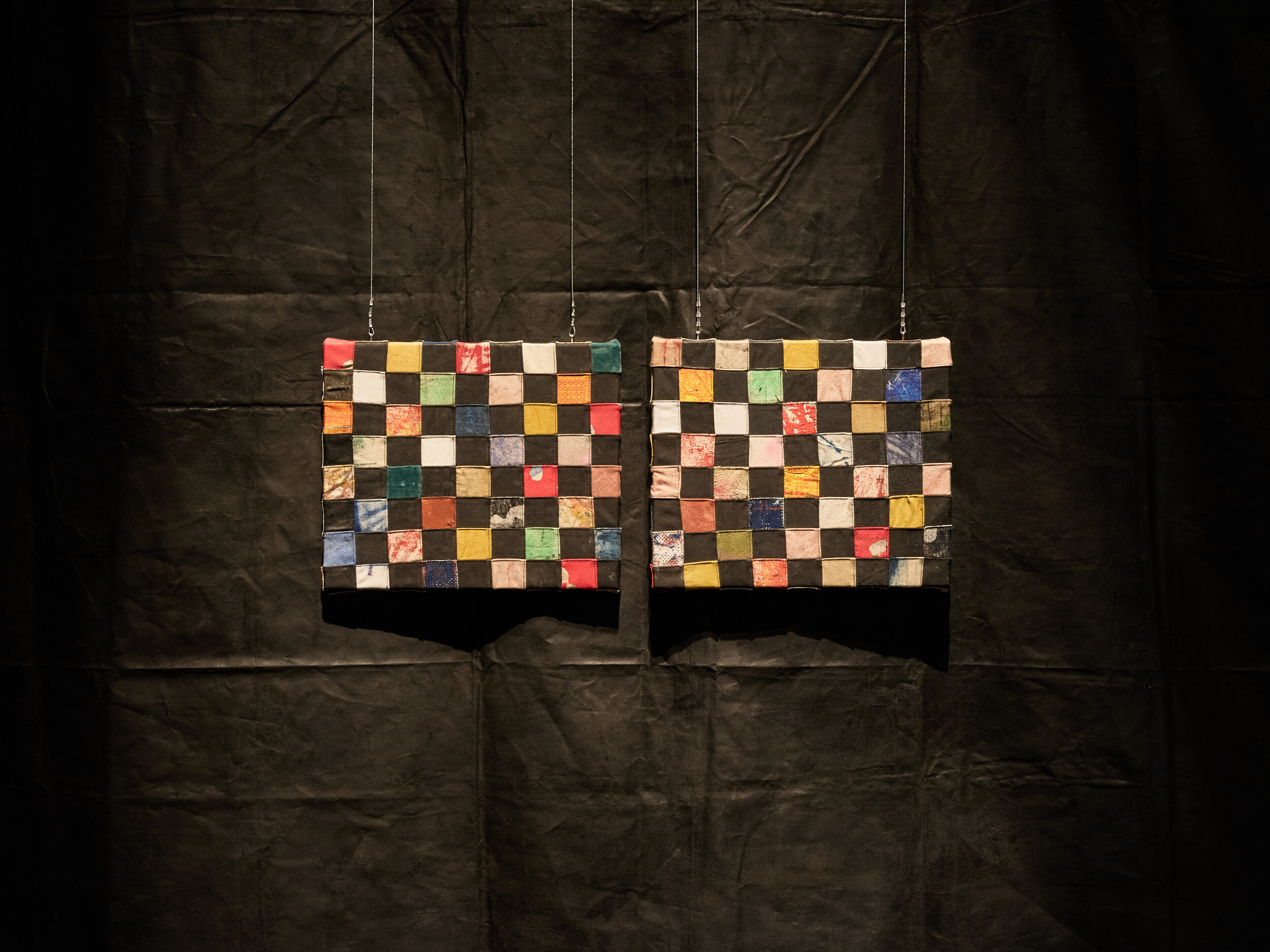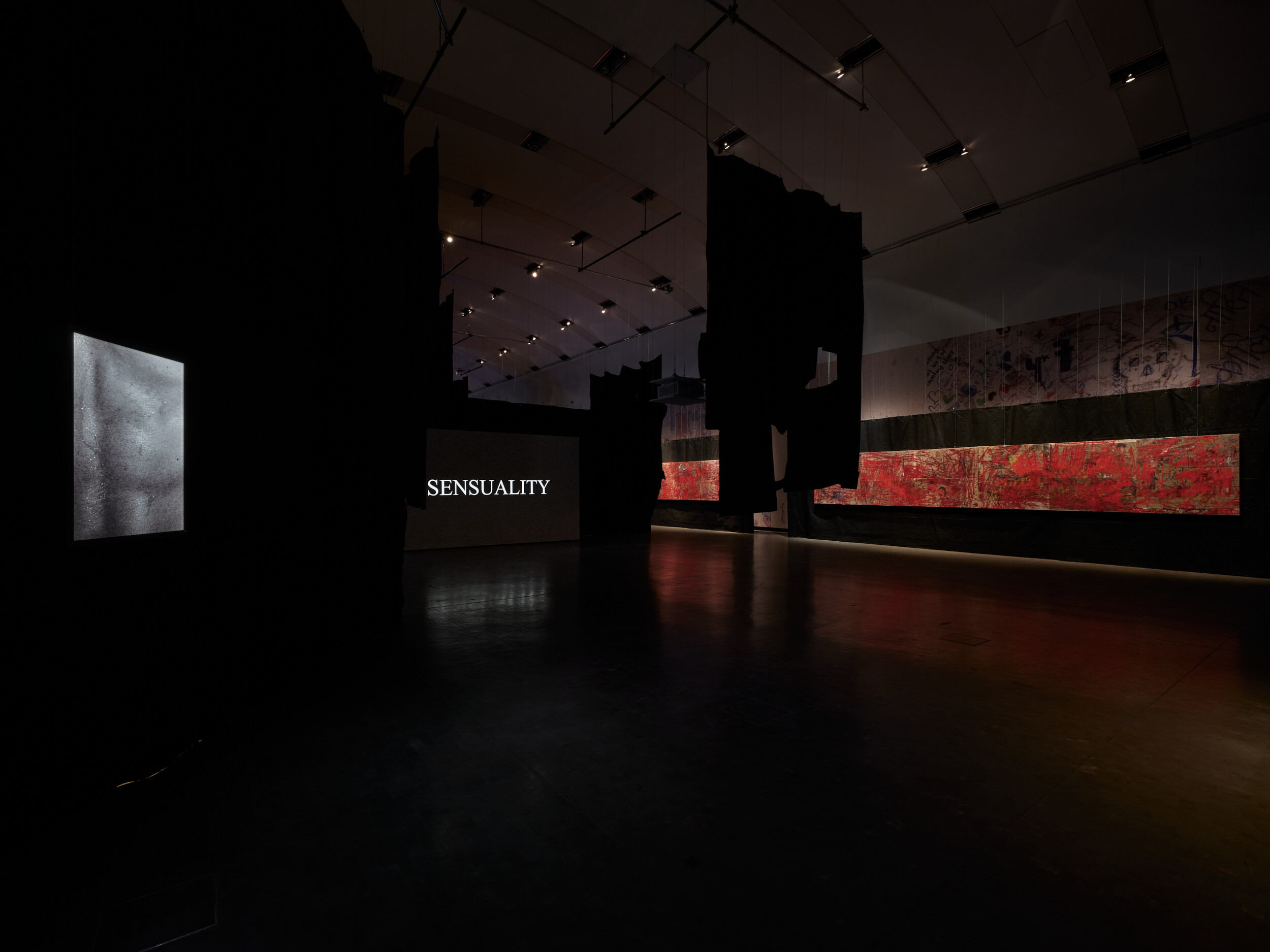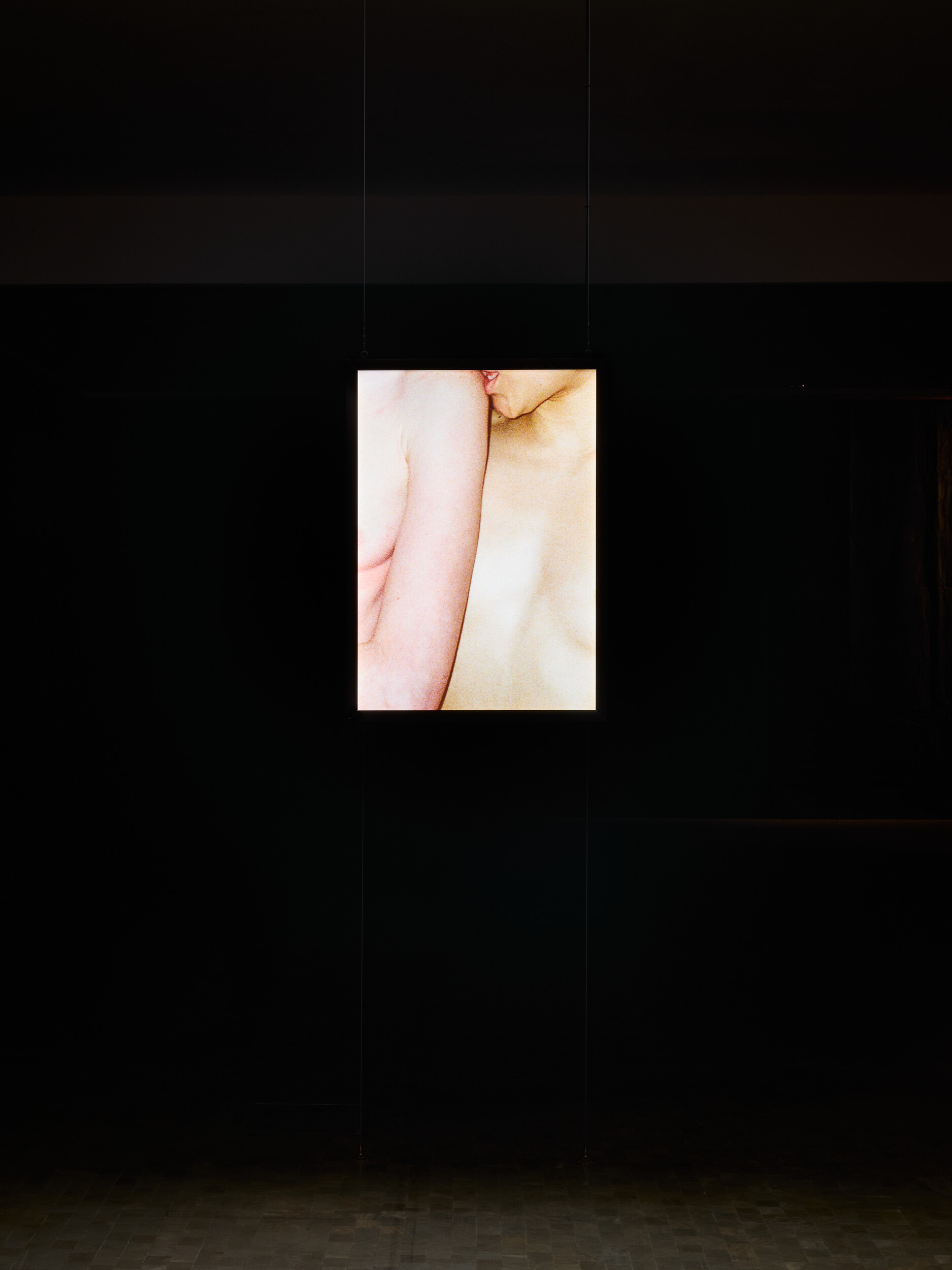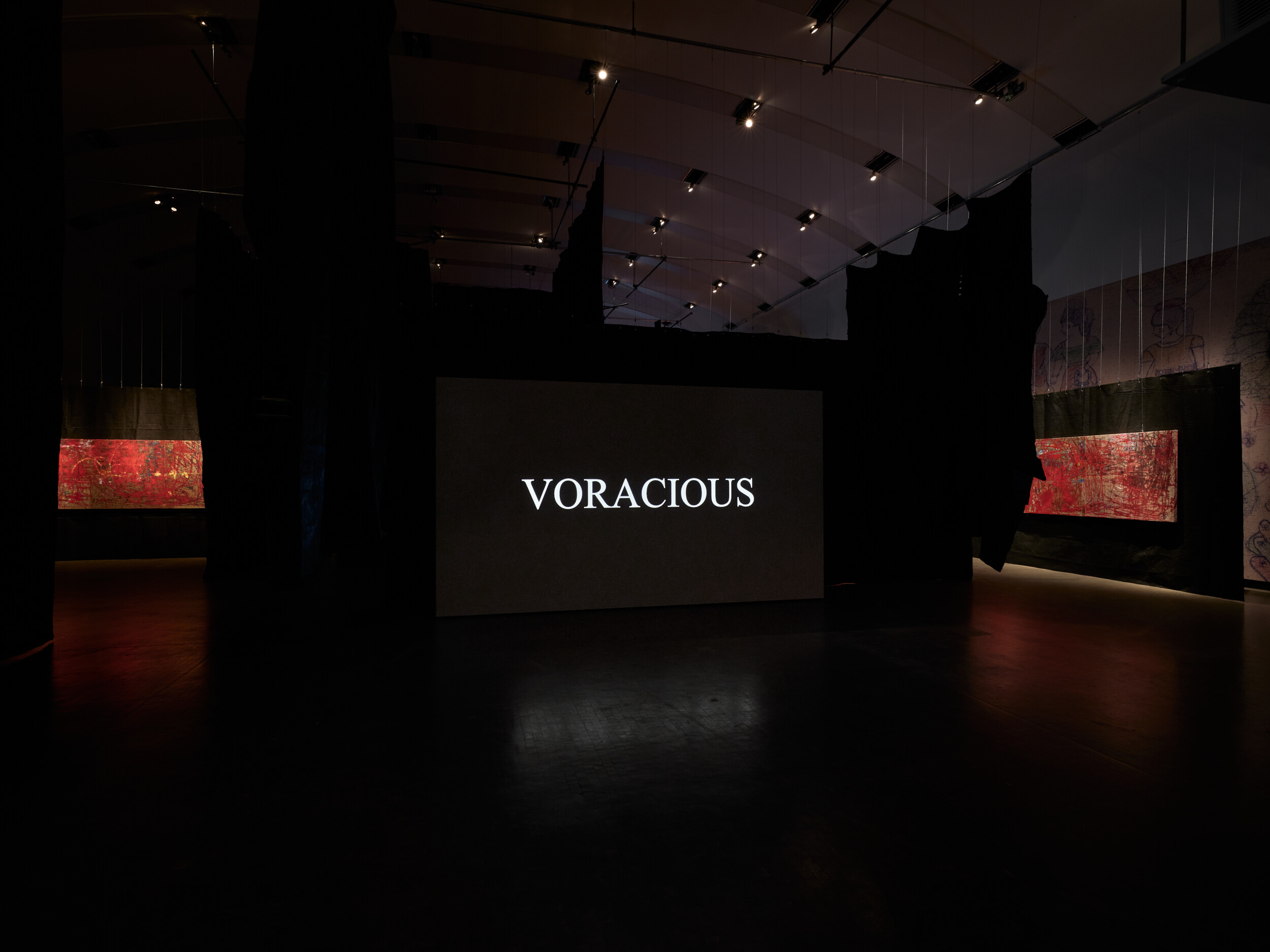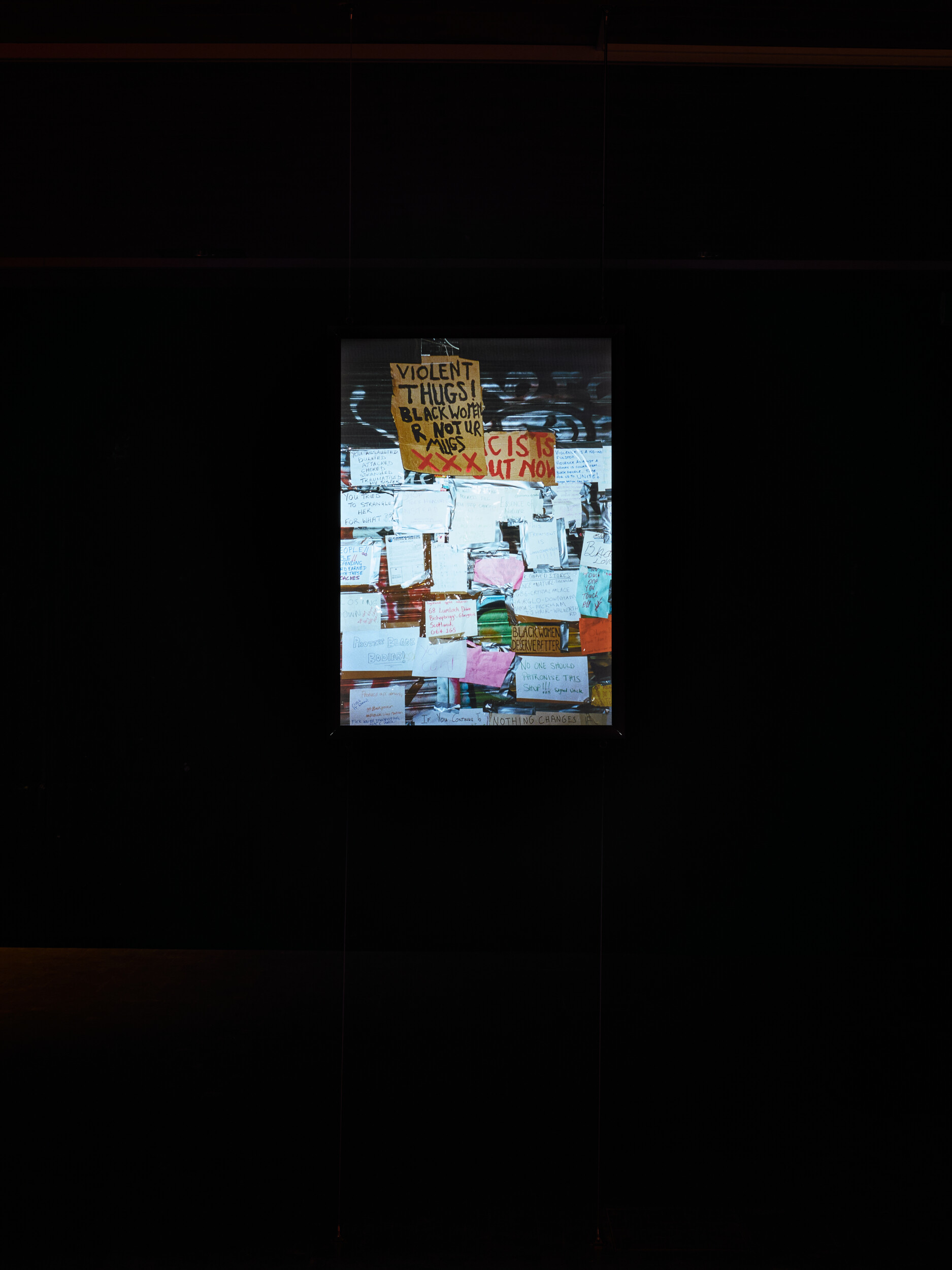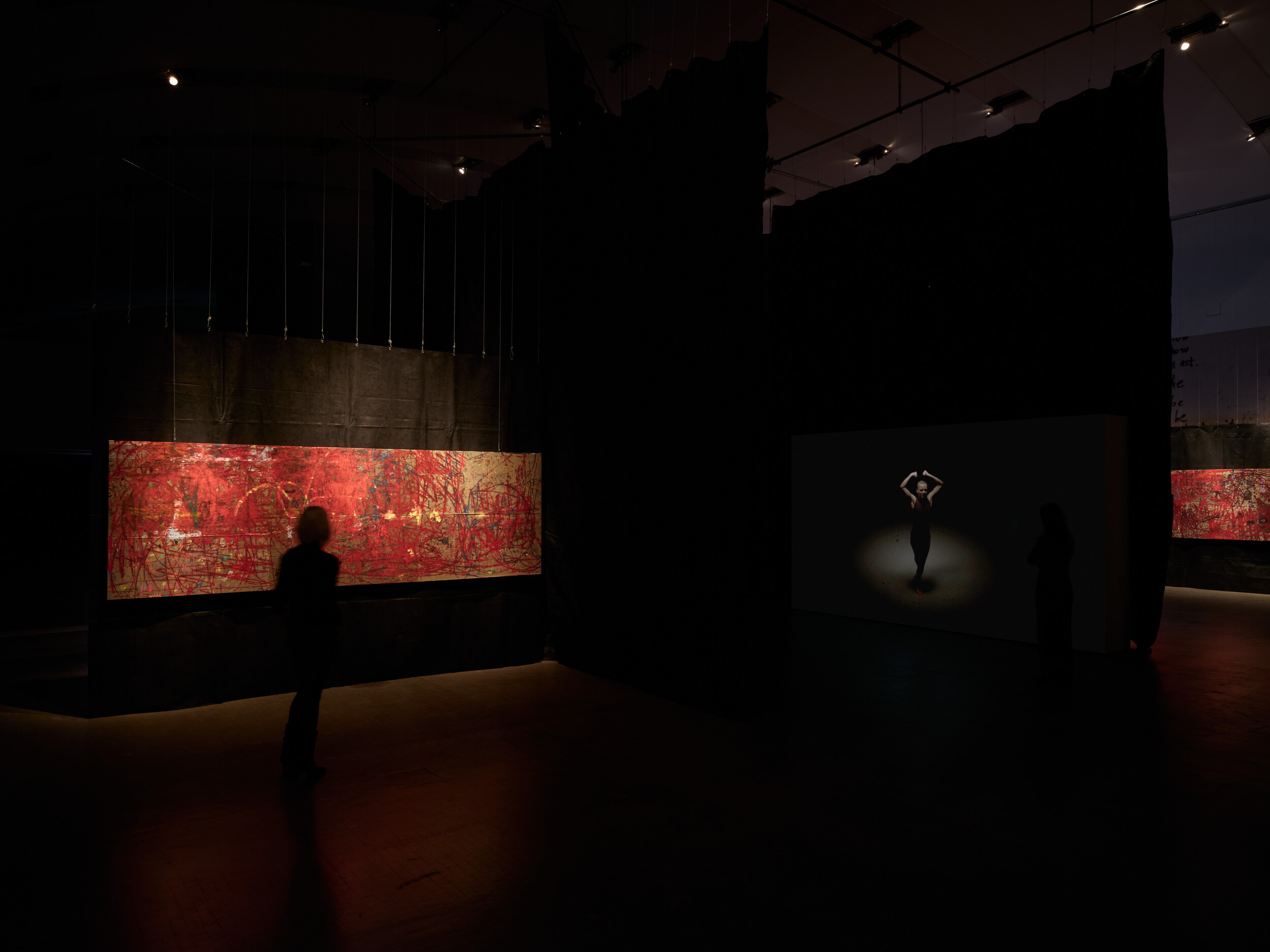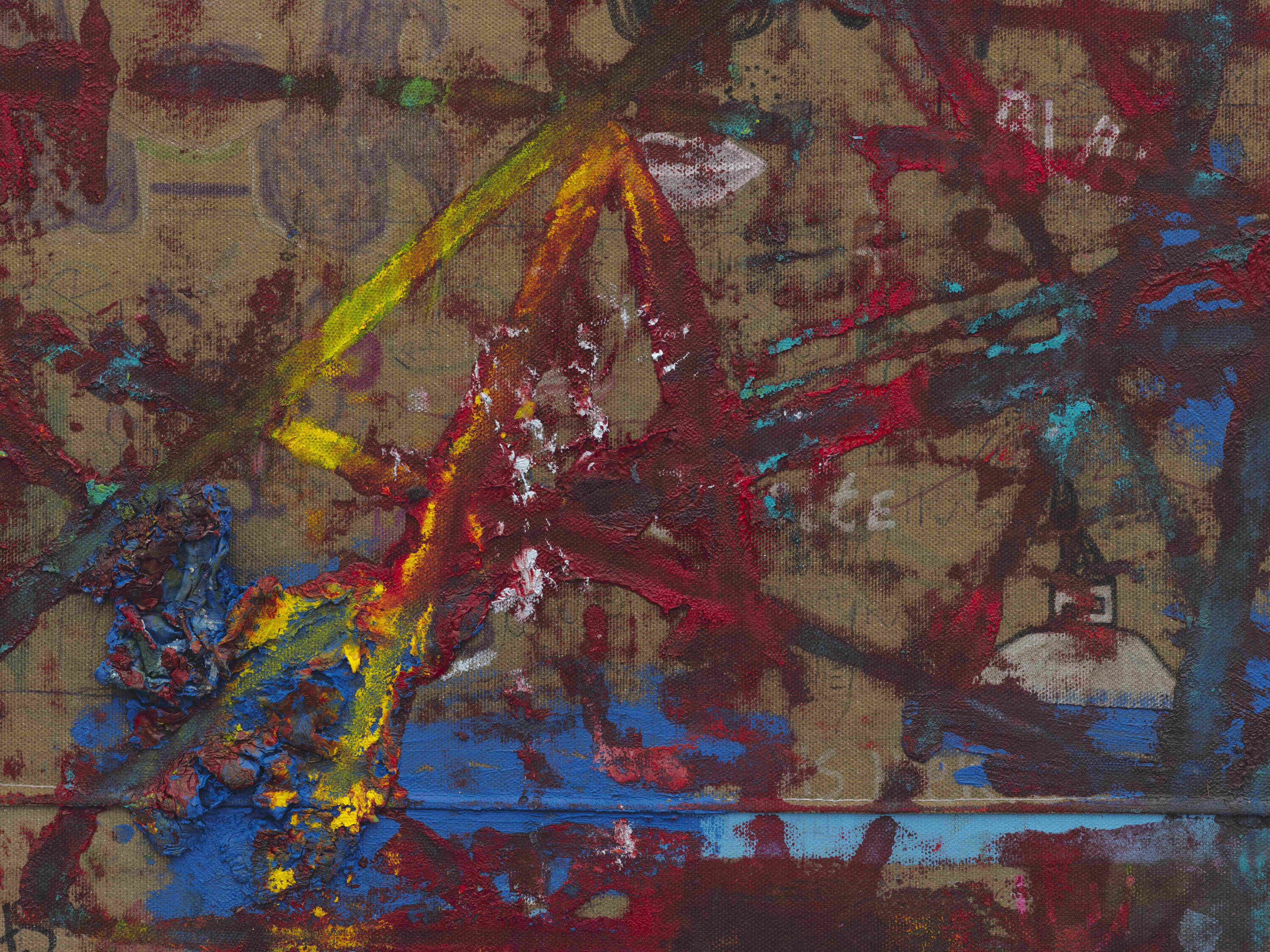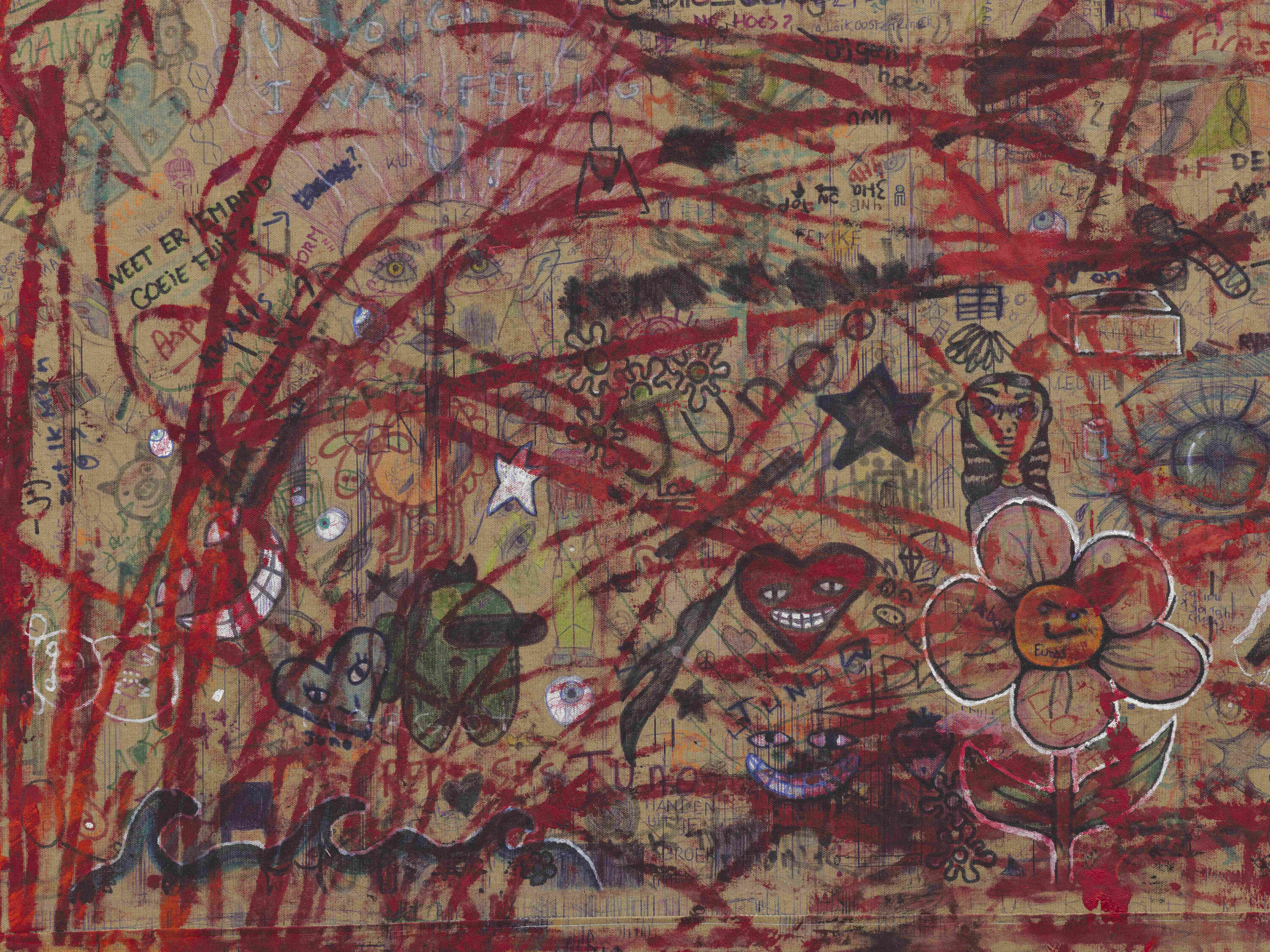Rene Matić / Oscar Murillo
JAZZ


The duo show, JAZZ., presents Rene Matić (b.1997, Peterborough, UK) and Oscar Murillo (b. 1986, La Paila, Colombia) together for the first time. Both artists present existing works as well as new commissions made specifically in response to the space and the city of Vienna. Encompassing painterly gestures, installation, film, photography, and sound, each element on show is in dialogue, shaped by Murillo’s black canvas installation which is suspended from the ceiling throughout the space. Together, through dissection and reconciliation, both artists explore the impossibilities and contradictions that arise from notions of desire, visibility and opacity. In contrast to transparency, opacity simply accepts that everything that makes us us cannot be understood completely.
Coming from differing vantage points and mediums, both artists employ gesture and abstraction within their practices. Murillo chooses the social over the subjective and the collective over the individual, while Matić’s practice is often grounded in the personal. At the heart of Murillo’s work is gestural painting, reminiscent of action painting, akin to the use of dance in Matić’s videos, as they both share a spontaneous, unbothered and unscripted nature. Additionally, both artists succeed in carving out a space of independence for themselves in a cultural context that is determined to classify and smooth out everything and everyone. By creating room for discontinuous and new thinking they reformulate one’s (art-)historical narratives and genealogies.
The title JAZZ. evokes many resonances and qualities within each artist’s practice. It could be understood as a mode of artistic collaboration but also of reception: one where cultural sensibilities are blended, improvisation takes place, group interaction becomes as vital as the individual voice. JAZZ. nods to concepts of desire, of consumption of the Other, it plays with performativity while retaining the right to opacity.
In the exhibition, Oscar Murillo’s large-scale black canvases are suspended from the ceiling to create an almost labyrinthine structure, they carefully shape the space, allowing for intimate encounters with the works, such as fields of spirits (2023) and Telegram (2016–2023). Both series are based on the collaborative Frequencies project in which Murillo covers tables in schools around the world with canvases for pupils to paint, draw and doodle freely.
Working with fragments – made in different spaces and time periods, and moved from place to place only to be stitched together or reworked layer by layer – has long been at the core of Murillo’s work. It’s a practice that highlights the presence of the many hands and vastly different geographical contexts that permeate his paintings, sculptures, and performances.
Circling Murillo’s structure but also deeply embedded in it, we find Rene Matić’s contributions to the exhibition. Four new commissions take Vienna’s reaction and “outrage” to Josephine Baker’s appearance in the city in 1928 as a starting point. With the film works redacted and climax, the photo series (out of) place and the sound work voice, Matić refers to the reactions that Baker triggered in Vienna, which was an arch-Catholic city at the time.
In redacted, we see the artist dancing in a black space with a single fixed spotlight. Matić draws on darkness as a means of occlusion and a strategy of removal that can signify both refusal and protection – a notion of essential value to bodies that are already by default exposed in their cultural and societal context.
In voice, the sound of church bells rings out within the gallery space from time to time – only in this case they do not signal a warning about but rather call for prayer for Baker, giving voice back to the dancer. The bell also acts as an interruption in the space, to remind the audience of their participation in the act of looking, and the histories and politics surrounding that act.


